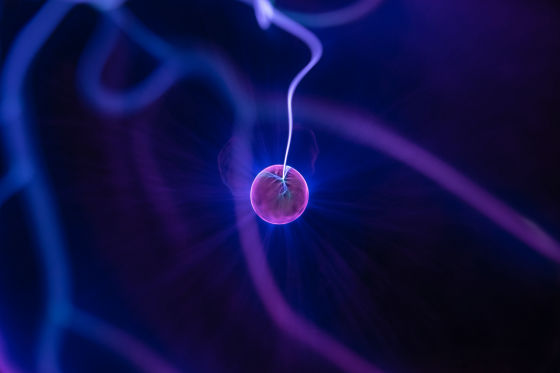What kind of reaction does the brain show when people feel sadness?

by Anthony Tran
On November 8, 2018, a research paper published in Cell , the world's best academic journal in the field of life sciences such as medicine, biochemistry, molecular biology, etc., the electrical interactions in the brain, Analytical results on the fact that brain regions exchange information with each other are reported. According to this, when a person feels uneasy or falls into a state of depression, he / she increases the exchange of information in a specific area of the brain related to memory and emotion.
An Amygdala-Hippocampus Subnetwork That Encodes Variation in Human Mood: Cell
https://www.cell.com/cell/fulltext/S0092-8674(18)31313-8

What Does Sadness Look Like in the Brain?
https://www.livescience.com/64043-sadness-brain-activity.html
According to the researcher, although it is not clear at the time of article creation what the cause of the interaction that increases in a specific region in the brain when the mood is falling, activity in any part of the brain becomes active It is said that it succeeded in identifying whether it is.
When humans are feeling anxiety and depression, it is clear from the results of previous studies that physical symptoms are occurring in the brain. Dr. Vicuz Souhar, a psychiatrist at the University of California at San Diego, who led the latest research published at Cell, said, "For many patients, when it comes to depression, it is a" specific concrete It is very important to know that it is caused by things. "For some patients, it also leads to providing important validation , which may help the appropriate treatment." I am preaching the importance of knowing exactly what kind of symptoms are occurring in the brain when feeling falls.

by Zoltan Tasi
Researchers measured brain activity by measuring brain waves by using a technique called intracranial electroencephalogram inspection (iEEG). As described in "intracranial", this technique is performed by embedding electrodes and wires in the cranium, and records the electrical activity of the brain cells with electrodes in the brain. Science media Live Science says "In other words, it is like recording the communication exchanged on brain cells."
In past studies investigating the connection between brain activity and emotion, we measured changes in blood flow to various parts of the brain. However, this research indirectly measured activity in the brain through blood flow, and we could not measure brain activity occurring in a very short time like this time.
Of course, this research also has drawbacks. Since the iEEG used in the study is an invasive measure of implanting the electrode in the brain, the electrode will remain in the brain after the study is over. Therefore, in the research, we already recruit subjects with electrodes in the brain. Ultimately, 21 epileptic patients with electrodes in the brain to identify seizures were chosen by subjects.
In the study, brain activities of 21 subjects were measured for 7 to 10 days. During the same period of time, the subjects reported that they recorded their moods in their diaries. As a result of the survey, 13 people out of 21 subjects felt their mood felt, exchange between the amygdala body , which is the brain area related to emotion treatment , and the brain area / hippocampus relating to memory, is increasing It turned out that it was.

by Francisco Gonzalez
Dr. Sohar said to Live Science "The idea that negative experiences and negative emotions are closely tied to memory is an old idea in the field of psychiatry and an idea at the center of cognitive behavioral therapy Our findings may represent a biological foundation of emotional and memory relationships in cognitive behavioral therapy. "
According to Dr. Sohar, the area of the brain, such as the amygdala and the hippocampus, has long been thought to be related to depression and anxious emotions. However, although I know "that the amygdala and the hippocampus are related to uneasy feelings", I do not know how it works, but, as it is, some songs are played on the radio Although I know that I am there, I heard that it was in a state I did not know at which station it was flowing.
However, Dr. Sohar's research has revealed details of the neuronal activity pattern and signal transmission in the amygdala and hippocampus, so from now on it will be a new treatment method targeting these areas of the brain (amygdala and hippocampus) It is possible that it will be able to do development etc. For example, excessive information exchange occurs between the amygdala and the hippocampus when depressed or the like, so treatment such as inhibiting this and adjusting it to moderate exchanges can be mentioned.

by Diego PH
Still it is not clear how emotions and memories are intermingled. Dr. Sohar said, "Perhaps when a person is depressed, the negative emotions of the amygdala evoke a sad memory from the hippocampus, or vice versa."
In addition, it is unknown whether anxiety emotions will increase the exchange of amygdala and hippocampus, or whether uneasy feelings will increase by increasing the exchange of amygdala and hippocampus. Even if it turns out that the correct answer is the latter and that another part of the brain has a bad influence on the uneasy feeling of the person, the possibility that the negative emotion may be amplified by increasing the exchange of amygdala and hippocampus It is extremely high, and the idea of preventing amplification of negative emotions by inhibiting exchange of amygdala and hippocampus is considered extremely useful.
In addition, when negative emotion increases the exchange of amygdala and hippocampus, monitoring this negative emotional level of severe depressed patients, using this phenomenon and measuring the heart rhythm with the pacemaker, Researchers say that there is a possibility of treatment.
Related Posts:
in Science, Posted by logu_ii







